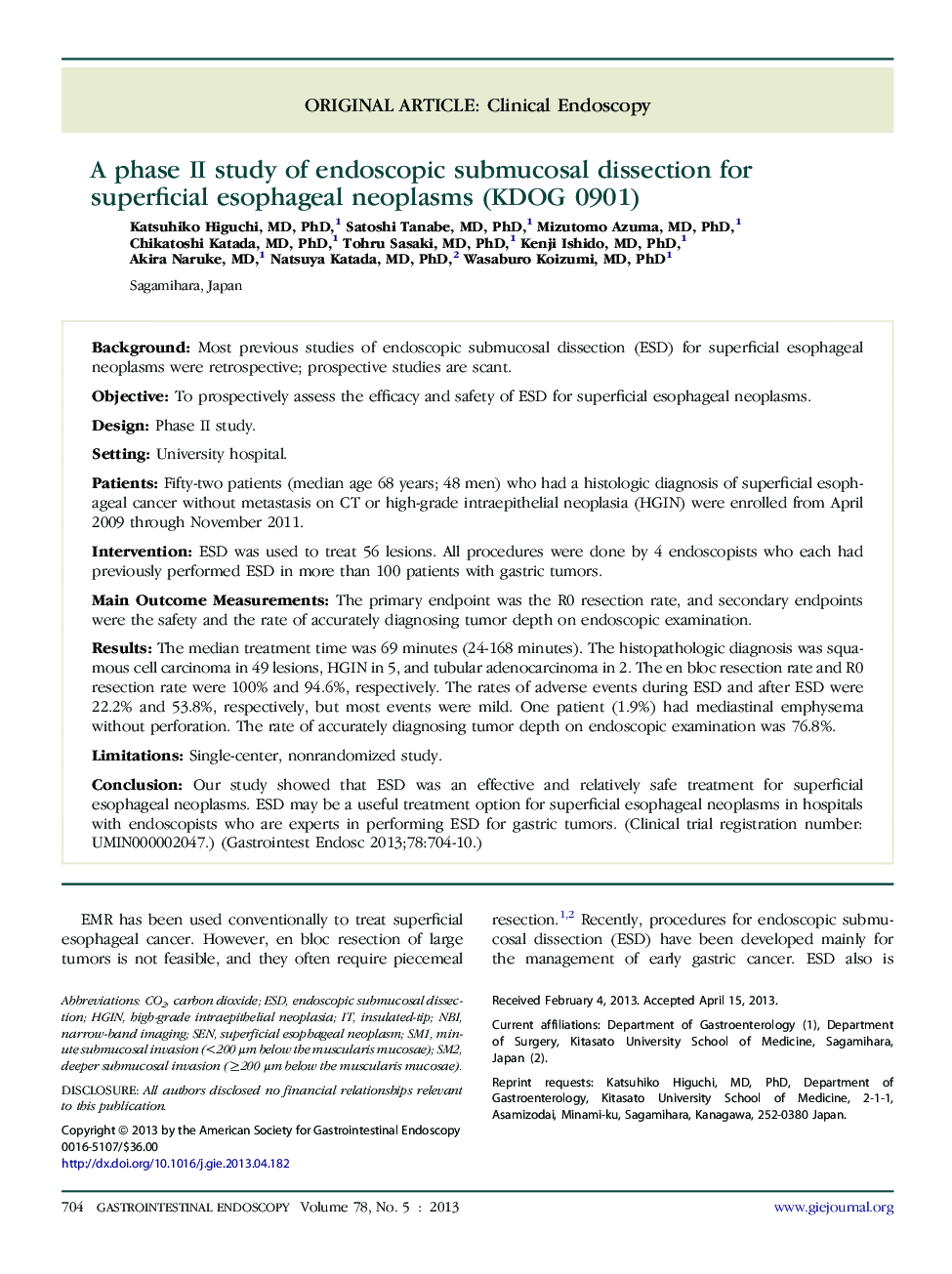| Article ID | Journal | Published Year | Pages | File Type |
|---|---|---|---|---|
| 3303119 | Gastrointestinal Endoscopy | 2013 | 7 Pages |
BackgroundMost previous studies of endoscopic submucosal dissection (ESD) for superficial esophageal neoplasms were retrospective; prospective studies are scant.ObjectiveTo prospectively assess the efficacy and safety of ESD for superficial esophageal neoplasms.DesignPhase II study.SettingUniversity hospital.PatientsFifty-two patients (median age 68 years; 48 men) who had a histologic diagnosis of superficial esophageal cancer without metastasis on CT or high-grade intraepithelial neoplasia (HGIN) were enrolled from April 2009 through November 2011.InterventionESD was used to treat 56 lesions. All procedures were done by 4 endoscopists who each had previously performed ESD in more than 100 patients with gastric tumors.Main Outcome MeasurementsThe primary endpoint was the R0 resection rate, and secondary endpoints were the safety and the rate of accurately diagnosing tumor depth on endoscopic examination.ResultsThe median treatment time was 69 minutes (24-168 minutes). The histopathologic diagnosis was squamous cell carcinoma in 49 lesions, HGIN in 5, and tubular adenocarcinoma in 2. The en bloc resection rate and R0 resection rate were 100% and 94.6%, respectively. The rates of adverse events during ESD and after ESD were 22.2% and 53.8%, respectively, but most events were mild. One patient (1.9%) had mediastinal emphysema without perforation. The rate of accurately diagnosing tumor depth on endoscopic examination was 76.8%.LimitationsSingle-center, nonrandomized study.ConclusionOur study showed that ESD was an effective and relatively safe treatment for superficial esophageal neoplasms. ESD may be a useful treatment option for superficial esophageal neoplasms in hospitals with endoscopists who are experts in performing ESD for gastric tumors. (Clinical trial registration number: UMIN000002047.)
